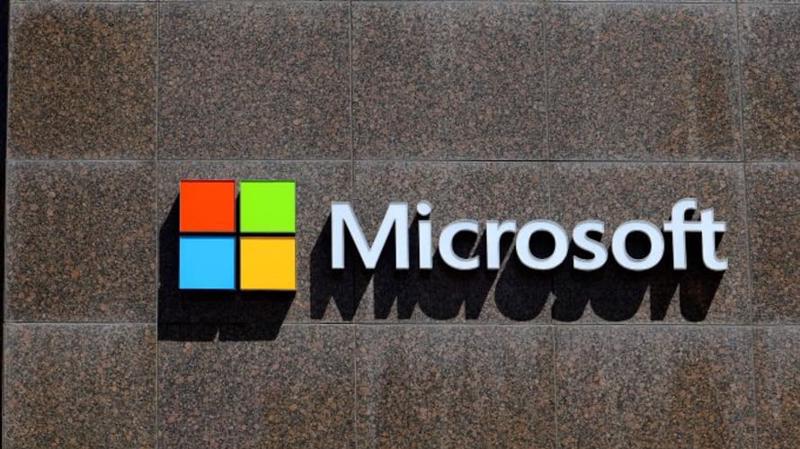In the ever-evolving world of technology, job cuts have become an unfortunate but recurring theme. The latest giant to announce job reductions is Microsoft, which has confirmed plans to cut less than 1% of its workforce. While this figure might seem small, it has raised concerns about the long-term impact of the ongoing technological transformation, particularly as artificial intelligence (AI) continues to reshape industries across the globe.
Here's ads banner inside a post

A New Round of Layoffs at Microsoft
According to CNBC, Microsoft’s decision to reduce its workforce is based on performance rather than structural changes or downsizing. The company, which had 228,000 full-time employees as of June 2024, remains one of the largest tech companies in the world. Despite periodic layoffs in recent years, Microsoft’s workforce has steadily grown, suggesting that job reductions are not due to an overall contraction, but instead reflect internal reshuffling and the evolution of business priorities.

Here's ads banner inside a post
The company had previously implemented several rounds of major layoffs, notably in response to its shift toward cloud computing and AI. However, this latest round appears to be smaller, affecting less than 1% of the total workforce. It is also part of a broader trend where technology companies reassess their workforce to align with emerging needs in the rapidly growing AI sector.
Microsoft’s decision to cut jobs comes amid increasing investments in AI technologies, signaling that automation and AI-driven processes are having a profound impact on employment across various industries. The company has been dedicating significant resources to AI, competing with other tech giants like Google, Amazon, and Meta Platforms. Microsoft’s ambitious AI strategy is central to its growth plans, with the company announcing an $80 billion investment in fiscal 2025 for AI-enabled data centers. Over half of this spending will be focused in the U.S., reflecting the company’s commitment to expanding its AI capabilities.
Here's ads banner inside a post
The Role of AI in the Workforce Transformation
AI has become one of the most disruptive forces in the modern economy. While its potential benefits are clear—ranging from increased productivity to new technological advancements—the concerns about job displacement are undeniable. Microsoft President Brad Smith addressed these concerns in a recent blog post, acknowledging that AI, like all new technologies, will displace some jobs. However, he emphasized that the company’s ongoing “skilling initiatives” aim to prepare workers for the future, ensuring that new opportunities will outweigh the challenges AI brings.

This forward-thinking approach is designed to foster resilience in the workforce. By investing in retraining programs and skill development, Microsoft hopes to help employees transition into new roles that are less susceptible to automation. Smith’s comments underline the company’s optimism about AI’s potential to create new roles, even as certain jobs become obsolete. However, the reality of AI’s impact is still being understood, and the potential for job losses in certain sectors remains high.
Tech Layoffs: A Broader Trend in 2024
The wave of tech layoffs is not unique to Microsoft. In fact, layoffs across the tech industry reached a peak in 2023, with 264,220 jobs cut according to Layoffs.fyi, a website that tracks tech job losses. This marks a stark contrast to the 152,074 layoffs in 2024, suggesting that, while the trend is still prevalent, the pace of job cuts has slowed down.

Despite the slowdown, tech companies like Cisco Systems and Dell Technologies have also been reducing their workforce. These companies, which are heavily investing in AI, have seen similar workforce reductions, signaling a broader shift in the industry. As AI becomes a cornerstone of technological growth, it is clear that companies must recalibrate their operations and workforce to remain competitive. However, it is also evident that these changes come with difficult trade-offs, including the risk of displacing employees in favor of more advanced technological solutions.
Job Displacement vs. Job Creation: The AI Paradox
While the tech sector embraces the potential of AI, the paradox remains: AI may drive significant job creation in some areas but lead to job losses in others. For instance, roles in AI development, machine learning, and data analysis are likely to increase as companies ramp up their investment in these fields. However, routine and repetitive jobs—particularly in administrative, support, and lower-skilled positions—are at risk of being automated.

According to experts, AI has the potential to create entirely new industries and job categories, but this transformation is not without its challenges. Workers who have spent years building careers in roles that are now susceptible to automation may find it difficult to transition to new fields without significant retraining. This is why Microsoft and other tech giants have emphasized the importance of reskilling programs, which aim to bridge the gap between the jobs of today and the roles of tomorrow.

The ongoing debate about AI’s impact on the workforce is not limited to the tech industry. Across various sectors, AI is prompting companies to reassess their business models, explore new revenue streams, and ultimately redefine their approach to human capital. The question remains: How can businesses, governments, and employees collaborate to ensure that the benefits of AI are distributed equitably, without exacerbating inequality or leaving too many workers behind?
Preparing for the Future: The Road Ahead
Microsoft’s commitment to AI and its broader investments in technology signal a future where automation plays a central role in business operations. As the company reduces its workforce, it is clear that these cuts are part of a larger strategy to streamline operations and focus on the technologies that will drive the next wave of innovation. However, the key challenge for both Microsoft and the broader tech industry will be balancing the displacement of workers with the creation of new opportunities.

For employees, the key to thriving in an AI-driven future will be adaptability. Those who can quickly acquire new skills, particularly in areas like AI development, data science, and cybersecurity, will likely find themselves in high demand. At the same time, companies must continue to invest in reskilling and upskilling initiatives to ensure that their workforces are not left behind in the race toward automation.
The tech industry’s current trajectory suggests that AI will continue to shape the workforce in profound ways. While job cuts like those at Microsoft are unsettling, they serve as a reminder of the broader forces at play. The challenge for both employers and employees will be to navigate this shifting landscape and to ensure that the opportunities AI creates are accessible to all.

In conclusion, the recent layoffs at Microsoft reflect a broader trend in the tech industry where the rapid growth of AI is reshaping business strategies and workforce needs. As companies like Microsoft invest billions in AI technologies, the workforce must adapt, and the future of work will depend on the ability of employees to acquire new skills and navigate the changing landscape. While AI will undoubtedly disrupt existing job markets, it also holds the potential to create new opportunities—if society can rise to meet the challenge of preparing for this brave new world.


